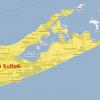-
Posts
3,372 -
Joined
-
Last visited
Content Type
Profiles
Blogs
Forums
American Weather
Media Demo
Store
Gallery
Posts posted by EasternLI
-
-
-
-
58 minutes ago, Allsnow said:
Eps totally caving to the GEFS this afternoon…not shocked
Definitely did in the tropics this run. Much more of the gefs type looks there among the individual members then there have been at 12z. I think it makes sense too, with what the gefs is doing. According to the sst layout currently anyway.
-
 5
5
-
-
2 minutes ago, Allsnow said:
It does imo because the euro charts are lingering in 2/3 longer now. Which is a nod to the American guidance. Even the olr maps are slower with the progression then the euro
Yeah I see what you mean. I actually think the gefs has done fairly well this year in the tropics. Euro guidance can get overamped sometimes late. I've seen it happen a couple times this season.
-
 2
2
-
 1
1
-
-
Those RMM charts don't tell the whole story. Careful with those.
-
 1
1
-
-
Eps is still getting a little crazy with forcing near Indonesia late in the runs. Gefs isn't really doing that. Not nearly as dramatic at least. Holds on to the split forcing look longer. Lots of spread amongst the eps members with this. With some really going overboard still in that area. But also some others more gefs like. It'll be interesting to see what happens there. I'm pretty confident the weeklies will be a torch today. Being based on the 00z eps. Still low confidence for end of the month for me.
-
 1
1
-
-
It's nice to see the gfs and euro showing something for that timeframe. At least both can "see" a possibility. CMC tried to do something but made a mess of it. Promising.
-
 4
4
-
-
14 minutes ago, MJO812 said:
Euro looks interesting for vday
I like that period for some sort of storm. Mentioned it the other day. Pv lobe pulled away, PNA spike. Keep an eye on that.
-
 5
5
-
 1
1
-
-
18 minutes ago, TugHillMatt said:
"Insert picture of him wearing shorts and short sleeved shirt while it's in the 20s..."
"I was right!"

-
 3
3
-
 7
7
-
 1
1
-
-
5 minutes ago, bluewave said:
The EPS has more of a -PNA look near the end of the 0z run. But the GEPS and GEFS not as much. The big story this winter was the historic PNA rise from December to January. It was the greatest on record from December to January. So even if the +PNA weakens or reverses in late February, the February PNA reading won’t be anything like December was. So in two consecutive La Niña winters, this December will be the only severe -PNA out of 6 winter months. The December PNA was a record breaking -2.56 and January jumped to +1.01.
EPS had a select few members getting a little crazy around Indonesia very late. Here's one example of that below. I suspect this is overdone, but will have to watch. More of some sort of split forcing looks on many others. This is when I'm uncomfortable, until gefs and eps are on the same page. Wondering if it has something to do with the tropical systems in the IO and how they're ultimately treated. Not sure. Tricky timeframe for now.
-
 5
5
-
-
-
Truth be told, I would welcome a warm 2nd half. Just not a lot of confidence yet how that timeframe shakes out. Need to wait it out a bit longer.
-
 1
1
-
-
6 minutes ago, snowman19 said:
Severely positive NAM/++NAO, ++AO, there will be nothing to stop a SE ridge pump
That's cool. You already put away the winter attire. Nothing to worry about then.
-
 6
6
-
 1
1
-
-
14 minutes ago, EastonSN+ said:
That week 2 forecast does indeed look like a "torch".
I guess impossible to forecast if that is static or a temporary 1 to 2 week "flip".
Not necessarily. That's tropical stuff not 500mb anomalies. Have to be careful there. Especially later in the period. Tropical convection is the most complicated parameter on modeling. Best to just monitor trends. I wouldn't read too much into those RMM charts right now either. If we're dealing with competing areas of forcing.
-
 1
1
-
 2
2
-
-
3 minutes ago, bluewave said:
Yeah, was just looking through that stuff from 00z. That's exactly what it looks like. Something like that. Will have to keep an eye on that.
-
 1
1
-
-
2 minutes ago, EastonSN+ said:
Thanks the GEPS looks similar but a wider trough (possibly due to member spread).
Hate to ask but was the EPS similar?
Some similarities. Remember too that the others go out just a little bit further. Have to keep an eye on that TPV and where it goes beyond this. Something to look for on future runs.
-
 2
2
-
 1
1
-
-
-
WAG but the 14-16th period looks interesting. Based on the big picture view. With a TPV lobe pulling out and some sort of transient PNA spike.
-
 3
3
-
-
1 minute ago, EastonSN+ said:
Thanks, it actually starts to move towards GEPS at the end with the East Coast ridge.
Obviously cannot tell if it's a temporary reload or the change that the Mets are alluding to.
It's signaling a retrograde towards the very end. Seems due to some increased phase 2 activity from the looks of the tropical stuff. That can be a storm signal too. Gotta watch that. There could be something lurking out there before then like brooklynwx99 is saying. Afterwards, It's heading in this direction gradually I think. At least on today's edition.
-
 2
2
-
-
13 minutes ago, EastonSN+ said:
Anyone have the 12z eps hour 360?
Here's the 10-15 loop.

-
 2
2
-
-
49 minutes ago, EastonSN+ said:
Thanks!
I find it interesting that Jan and Feb the MJO we're in warm phases before March.
Here's a great illustration of what happened in 2015. Versus what occurred in December of this season. In a single image from the following paper. But it's also important to keep in mind other factors which may be present. One such example could be the PDO. Which was positive in 2015. Or the QBO. Nothing works in a vacuum. It's all interconnected. That's also important. It can get really extremely complicated. That's what makes seasonal forecasting so very difficult to this day. This image shows what effects could be expected from 2 different areas of focus via tropical convection. You can see how different the effects can be just from some subtle difference in location. Because of the rossby waves originating from these events. Indonesian activity drives a -PNA. Which we witnessed in December, in an anomalous way. However, move that just a bit east into the west/central Pacific. You see something like a 2015. Which is what happened that season. Hope this can be somewhat helpful. This is why we look to the MJO for clues.
https://www.nature.com/articles/s41598-019-49449-7

-
 3
3
-
-
2 minutes ago, bluewave said:
Yeah, we were all waiting on the MJO back in December. But it got stuck in the warm phases longer than forecast due to the record warm pool north of Australia. The magnitude of the shift in January matches some recent years like 14-15 and 15-16. But those were El Niño years which we came to expect dramatic changes after a warm start. This is really the first time a La Niña shifted so much from December record warmth and lack of snow to record snow and colder in January. Now we have an example of this NE PAC blocking pattern during ENSO neutral 14-15, El Niño 14-15, and La Niña in 21-22. So it can occur in varying ENSO states. This makes seasonal forecasting more challenging since this mode can replace or enhance ENSO expectations.
Agreed 100%. It's proving beneficial to look at things from a broader perspective. Instead of focusing very heavily on ENSO SSTs alone. Which has been the go to main method for many years. It's helpful to look a little more closely and keep an open mind in recent years. Older analogs have become less useful, which has been discussed. Keeping track of those marine heatwaves is going to be important moving forward.
-
7 minutes ago, bluewave said:
Recent studies have found that the persistent ridge near the West Coast and Hudson Bay TPV pattern is a result of rising WPAC SSTs.
https://www.mdpi.com/2073-4433/10/12/793/htm4. Conclusions
The diagnostics undertaken here suggest that the leading mode of the wintertime atmospheric stationary waves in the Northern Hemisphere has undergone a notable change. Since the 1980s, the first leading mode of anomalous winter stationary eddies in the subseasonal timescale has alternated from the PNA to a comparably strong NAWD. Given that EOF describes the variance of individual patterns, the observed increase in the amplitude of NAWD suggests that it may have overtaken the PNA as the more common type of winter variability, with increased influence from western North Pacific SSTs. The CESM large-ensemble simulations forced with increasing greenhouse gas indicate that the NAWD variance will gradually amplify alongside its low-frequency natural variability. This result implies that the subseasonal variation of the atmospheric circulations over North America could continue to be dominated by the NAWD mode, with the potential to sharpen the east–west temperature and precipitation division across North America.Further comparison of EOF1/EOF2 with PNA/NAWD using spatial correlation reveals a pattern change that is consistent among different reanalysis datasets. Analysis of the paleoclimate simulations suggests that NAWD does co-vary with the global temperature variation at centennial timescales: the NAWD variance was weak in the cooler Pleistocene and gradually increased and stabilized in the warmer Holocene. We further examined large-scale forcing of both atmospheric and oceanic origins for the amplified NAWD and found that most of the documented climate indices, which showed a connection to the 2013–2014 extreme winter of North America, are insignificantly correlated with NAWD with the exception of certain oceanic features like the WNP and Niño 4 (Y + 1); these imply that regional SST anomalies in the subtropical West Pacific may provoke teleconnections that affect NAWD. Future examination of the dynamic processes leading to the NAWD amplification should consider the stationary waves maintenance, namely the jet–terrain interactions, tropical and extratropical diabatic heating, and the effect of Arctic amplification.I must admit. This is all sort of why I saw this season as potentially pretty interesting back in late November. With the MJO possibility initiating the mixing up the pattern. Just not to this degree we appear to be witnessing. I'm very pleased to see these thoughts working out better than expected. It's an incredible flip from the December mess. Nice paper too, a rather fascinating season continues.
-
 1
1
-
-
4 minutes ago, EastonSN+ said:
I know it's only op runs, but they were kind of ugly WRT snowfall chances.
Not concerned. You set up something like that. Something will pop up I'd think at some point. It's a far cry from what we were thinking not very long ago. February is not canceled this year.
-
 3
3
-
 2
2
-




.thumb.png.148224fd8199788c4d3be1aca1918e12.png)



.thumb.jpg.b1ee27e4909347d023eb29b21ebdfb86.jpg)


.thumb.png.65900f166f401a940988bd36a606a7c8.png)
.thumb.png.af7d1d1286b29b7fdb1d2e873ed1294c.png)


February 2022
in New York City Metro
Posted
Canadian ensembles have something out there as well. It's possible to squeeze something in if we get the favorable PNA spike. Just from a pattern point of view. Gotta keep an eye on it.